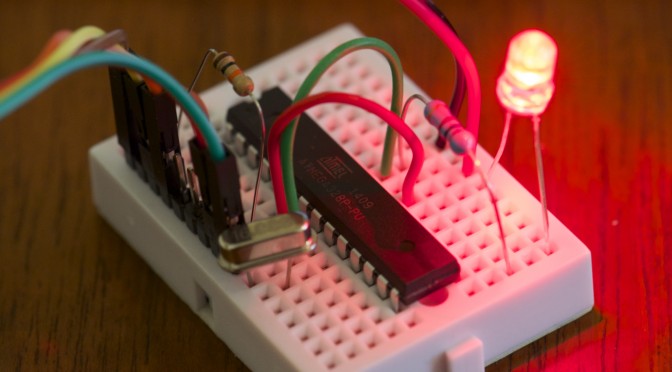Pick a random stall at Maker Faire UK and there’s a fair chance it’ll have flashing LEDs. And where there’s a flashing LED, there’s usually a little blue circuitboard driving it. The blue board is the famous Arduino, a family of open-source microcontrollers designed to allow easy interaction between code you write and real-world sensors and actuators.
There’s a complex and ever-expanding ecosystem of Arduino-compatible boards and interface units, and to a novice it’s all a bit overwhelming. I am that novice. Indeed, the list of Arduino projects I’ve completed looks like this:
- [insert list of future projects here]
However, awareness of what’s possible expands one’s set of available tools, and Arduino feels like the sort of thing I might, at some point, find useful. So every now and then I tinker a little. My tentative, toe-in-the-water approach to Arduino goes like this:

